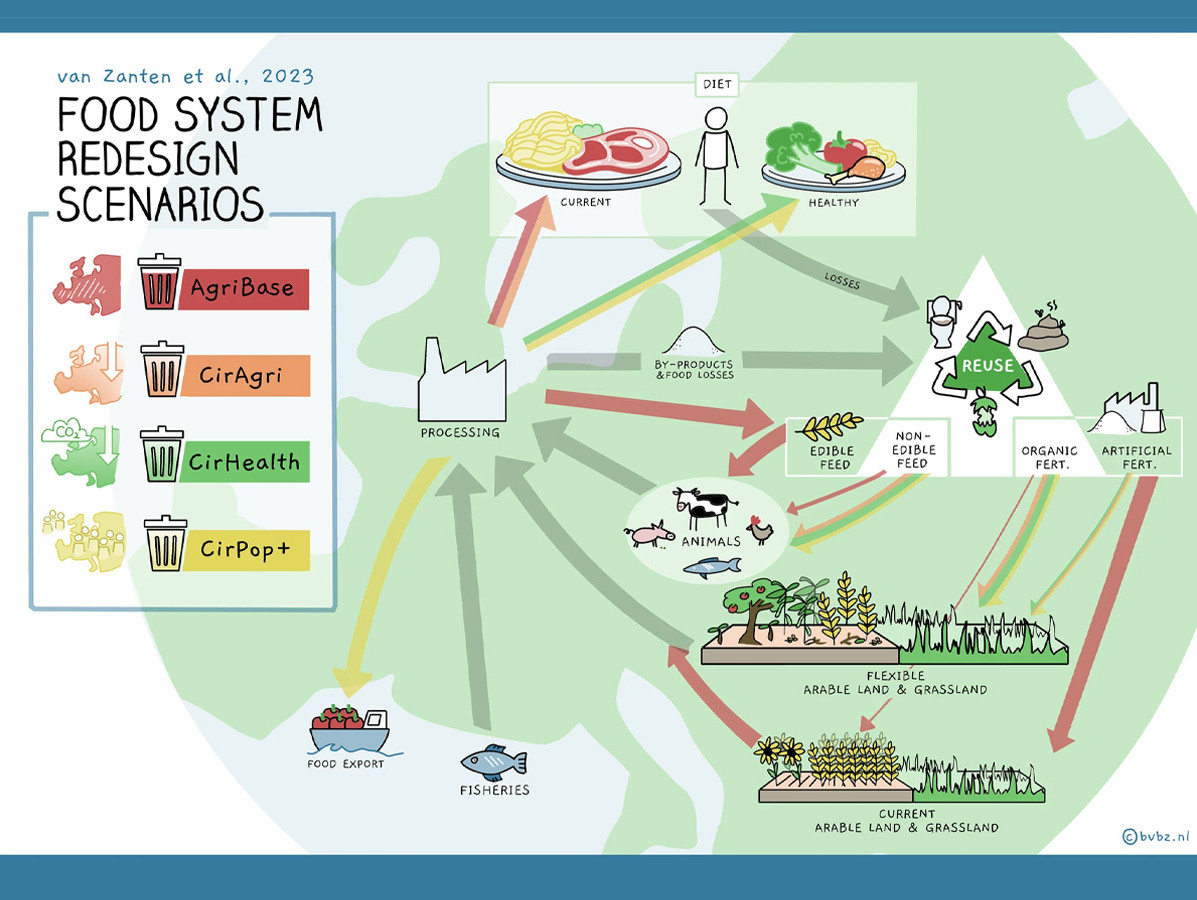
A circular food system has huge potential benefits for both our own health and the health of our planet. But what will we eat in the circular food system? An international group of researchers from Wageningen University & Research outlined the opportunities in four scenarios on how the current system can change into a fully circular food system.
There are huge gains to be made if we switch to a circular food system. As much as 71% less agricultural land would be needed in a fully circular agriculture system. A 29% per capita reduction in greenhouse gases is also feasible, even while still producing enough food for a healthy diet for all.
Four scenarios were developed: a baseline scenario, AgriBase (the current production-driven system) and three scenarios based on circular principles.
In the first of the three circular scenarios (CirAgri), circular principles are applied to the production systems while we continue our current food consumption pattern.
In the second scenario (CirHealth), the current consumption pattern is transformed into a healthy dietary pattern (based on the idea that overconsumption is basically a form of waste). Both scenarios reduce the amount of agricultural land required by over two thirds and decrease greenhouse gas emissions by 22% (if we continue our current consumption pattern) and by 29% if we switch to a healthy diet.
In the final scenario (CirPop+), Europe’s agricultural land is used to produce as much healthy food as possible. In this scenario, we could feed an additional 767 million people (+149%) outside Europe and so contribute to alleviating the global food crisis. This will, however, require using all of Europe’s agricultural land for this purpose. Moreover, total greenhouse emissions increase by 55% in this scenario.

The following conclusions apply to the transition to a circular food system in the EU and the United Kingdom:
Source: Wageningen University & Research